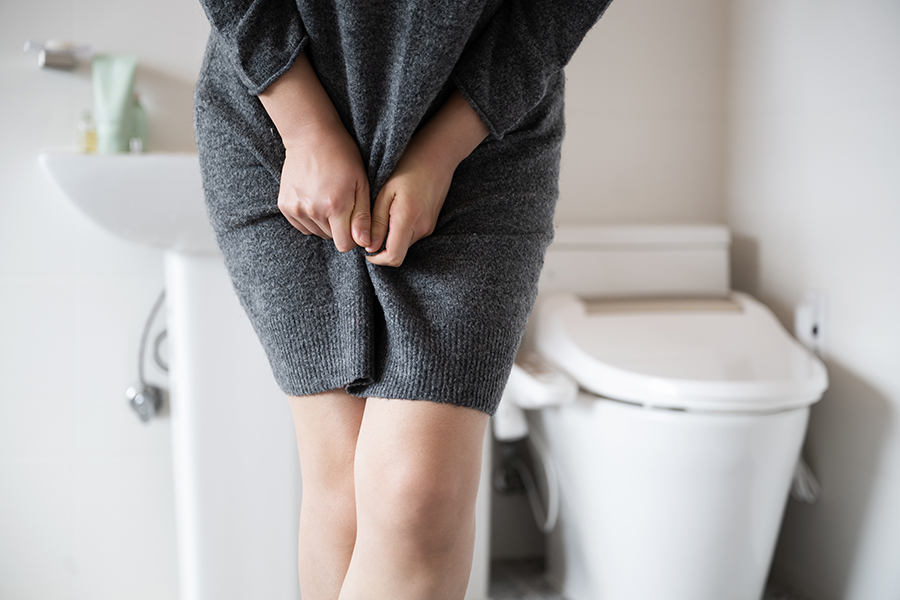Is Incontinence a Sign of a Urinary Tract Infection?
Posted by Renee Reintzel on Jun 14th 2024

Urinary incontinence is a common sign of a urinary tract infection. A urinary tract infection, or UTI, is an infection inside your urinary system. The urinary system consists of urethra, bladder, ureters and kidneys. UTIs develop when microbes enter the urinary tract, such as e. coli bacteria, which live in the bowel.
Urinary Tract Infections (UTIs) are responsible for more than 8 million visits to the doctor and hundreds of millions in costs per year.
Common UTI Symptoms
One of the most common UTI symptoms is the frequent urge to urinate. Someone with a UTI may also experience urine with a strong odor, notice blood in their urine, or feel a burning sensation during urination.
Men with UTIs may experience rectal pain, while women with UTIs may have back or pelvic pain.
Urinary tract infections usually appear with a fever. However, 30%-40% of the elderly do not display a fever with this common infection, making a UTI difficult to recognize in older adults.Below are other common symptoms of a UTI:
- Increased frequency of urination
- Pain or burning during urination
- Incontinence
- Lower abdominal tenderness
- Milky, cloudy or red/pink urine
- Fever or chills (signs of a more serious kidney infection)
If the person has communication challenges, symptoms may also include:
- Grimacing or painful facial gestures when urinating
- Sudden onset of confusion that is not normal for the person
Who Can Get a UTI?
Anyone can develop a UTI, from infants through seniors.
Physically, older adults and young children are at higher risk. Children who are potty training are learning self-hygiene. They may resist diaper changes or clean themselves poorly, leading to a greater exposure of fecal matter to the urinary tract. Infections of the urinary tract are more likely during this stage.
In older adults, the urinary system performance naturally degrades over time, leading to a higher infection risk. The body’s natural way of preventing urinary tract infections is through voiding urine. When urine travels through the urinary system, it washes bacteria out. As people age, bladders lose elasticity and kidneys’ ability to filter waste decreases, putting older adults at higher risk of developing UTIs.
Additionally, older adults may lose some nerve sensation and be unable to sense retained urine. Retained urine is when small amounts of urine are left in the bladder after voiding, increasing the possibility of a UTI. Other medical conditions more common in older adults, like high blood pressure, heart disease, diabetes and cancer, also increase the risk for UTIs.
UTI Prevention & Care
To reduce the risk of developing a UTI, doctors make the following recommendations:
- Stay well hydrated. Make sure you are consuming an adequate amount of daily fluid (approx. 8oz glasses of clear liquid per day).
- Avoid dietary bladder irritants such as alcohol, caffeine, spicy foods and citrus fruits.
- Urinate after sexual activity
- For women and those assigned female at birth, wipe from front to back to avoid contaminating the urethra with bacteria from the colon.
Incontinence and UTIs
If you are using absorbent products such as diapers (briefs), disposable underwear (pull-ups), or bladder control pads, changing those absorbent products immediately after becoming soiled or wet will help reduce the risk of urinary tract infections. It will also reduce the risk of skin breakdown or damage.
Prolonged skin exposure to urine can speed skin breakdown due to maceration (wet skin is less resistant to bacterial infection) and pH imbalance. Prolonged skin exposure to feces can quickly irritate and erode the skin. Fecal matter contains digestive enzymes from the digestive tract. When those enzymes sit on skin, they quickly “digest” the skin, causing skin erosion and damage.
Skin care products designed to gently clean and help protect the skin from incontinence episodes can help protect delicate perineal skin. A gentle cleanser such as Ca-Rezz Antibacterial Wash can clean and deodorize the skin, while stimulating healing with aloe. Barrier creams such as Cavilon or Calmoseptine are gentle enough for delicate perineal areas and can also be used in other areas of the body - such as skin folds, wound drainage areas, and areas with bed sores or eczema rashes - to provide a protective barrier between skin and other fluids/substances.
Proper cleaning of the genital area, or pericare, is also important. Clean from front to back using warm water or hypoallergenic cleansing cloths. Avoid rubbing or pressing too hard. This should be done all the time, but especially when a UTI is present.
Leftover urine in the bladder can also be a breeding ground for bacteria. After an incontinence episode, go to the bathroom and attempt to void all remaining urine from the bladder to make sure it is empty.
For more information on urinary tract infections, visit the CDC’s website on Urinary Tract Infection Basics.

